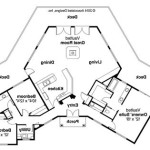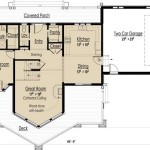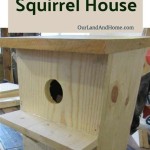Cat House Outdoor Plans refer to detailed instructions and designs for constructing a protective and comfortable shelter for outdoor cats. These plans provide step-by-step guidance on materials, dimensions, and construction techniques to create a safe and weatherproof haven for feline companions.
Outdoor cat houses serve a vital purpose in providing shelter from harsh weather conditions, predators, and other potential hazards. They offer a secluded and cozy space where cats can rest, sleep, and escape the elements. Building a cat house outdoors is a rewarding project that can greatly enhance the well-being and comfort of beloved pets.
In this article, we will explore various Cat House Outdoor Plans, discussing their features, materials, and construction methods. We will provide detailed instructions and tips to help you choose the best plan and build a durable and practical cat house that meets the needs of your furry friend.
When considering Cat House Outdoor Plans, there are several important points to keep in mind:
- Durability and weather resistance
- Appropriate size and insulation
- Ventilation and air circulation
- Easy access for cleaning
- Elevated design for protection
- Multiple entry and exit points
- Camouflage or design
- Predator resistance
- Cost-effectiveness
By carefully considering these factors, you can choose or create an Outdoor Cat House Plan that meets the specific needs of your feline companion and provides a safe and comfortable shelter for years to come.
Durability and weather resistance
Durability and weather resistance are crucial considerations for Cat House Outdoor Plans. Outdoor cat houses must be able to withstand various weather conditions, including rain, snow, wind, and extreme temperatures. They should also be resistant to damage from UV rays, moisture, insects, and other elements.
- Use durable materials: Choose materials that are resistant to rot, decay, and moisture damage, such as treated wood, cedar, or vinyl. Avoid using materials like cardboard or fabric, which can easily deteriorate outdoors.
- Provide proper insulation: Insulation helps regulate temperature inside the cat house, keeping it warm in winter and cool in summer. Use insulation materials such as foam, fiberglass, or straw to line the walls and roof of the house.
- Ensure proper ventilation: Ventilation is essential to prevent moisture build-up and stale air inside the cat house. Install ventilation holes or screens to allow for air circulation while keeping out drafts.
- Protect against moisture: Moisture can damage the cat house and create an unhealthy environment for cats. Use waterproof materials for the roof and seal any gaps or cracks to prevent water penetration. Consider adding a raised floor to keep the house off the ground and away from moisture.
By incorporating these durability and weather resistance measures into your Cat House Outdoor Plan, you can ensure that your feline friend has a safe and comfortable shelter that will withstand the elements and provide years of protection.
Appropriate size and insulation
Determining the appropriate size and insulation for a Cat House Outdoor Plan is essential to ensure the comfort and well-being of your feline friend. The size of the house should provide enough space for the cat to move around comfortably, while the insulation should keep the cat warm in winter and cool in summer.
- Size: The size of the cat house should be appropriate for the size of the cat. A general rule of thumb is to provide about 2 square feet of space per cat. For example, a cat house that is 2 feet wide by 3 feet long would be suitable for one cat. If you have multiple cats, you may need a larger cat house or provide multiple houses.
- Insulation: Insulation helps regulate the temperature inside the cat house, making it more comfortable for the cat during extreme weather conditions. You can use a variety of materials to insulate the cat house, such as foam, fiberglass, or straw. Be sure to use materials that are safe for cats and that will not absorb moisture.
- Ventilation: It is important to provide ventilation in the cat house to prevent moisture build-up and stale air. You can install ventilation holes or screens in the walls or roof of the house. Make sure the ventilation holes are small enough to prevent cats from escaping.
- Multiple entry and exit points: Providing multiple entry and exit points in the cat house gives your cat options to escape in case of danger or if another animal tries to enter the house.
By considering these factors when choosing or creating a Cat House Outdoor Plan, you can ensure that your cat has a comfortable and safe shelter that meets its needs.
Ventilation and air circulation
Proper ventilation and air circulation are crucial considerations for Cat House Outdoor Plans. A well-ventilated cat house prevents moisture build-up, stale air, and the accumulation of odors, ensuring a healthy and comfortable environment for your feline companion.
- Prevents moisture build-up: Moisture can damage the cat house and create an unhealthy environment for cats. Proper ventilation allows moisture to escape, preventing the growth of mold and mildew.
- Eliminates stale air: Stale air can be harmful to cats, especially if it contains pollutants or allergens. Ventilation helps circulate fresh air throughout the cat house, removing stale air and providing a healthier environment for your pet.
- Reduces odors: Cat houses can accumulate odors from food, litter, and other sources. Ventilation helps disperse these odors, keeping the cat house smelling fresh and inviting for your cat.
- Regulates temperature: Proper ventilation can help regulate the temperature inside the cat house, making it more comfortable for your cat during extreme weather conditions. Ventilation allows warm air to escape during hot weather and helps trap warm air during cold weather.
By incorporating proper ventilation into your Cat House Outdoor Plan, you can ensure that your cat has a healthy and comfortable shelter that meets its needs.
Easy access for cleaning
Easy access for cleaning is an important consideration for Cat House Outdoor Plans. A cat house that is easy to clean will help keep your cat healthy and comfortable, and it will also be more pleasant for you to maintain.
Here are some tips for designing a cat house that is easy to clean:
- Use removable parts: Removable parts, such as a roof or a door, make it easy to clean the inside of the cat house. This is especially important for removing dirt, debris, and cat hair.
- Use smooth surfaces: Smooth surfaces are easier to clean than rough surfaces. Avoid using materials that have crevices or cracks where dirt and debris can accumulate.
- Use materials that are resistant to stains and odors: Materials that are resistant to stains and odors will make it easier to keep the cat house clean and fresh. Avoid using materials that absorb moisture or odors.
- Place the cat house in a location that is easy to access: The cat house should be placed in a location that is easy for you to access for cleaning. Avoid placing the cat house in a remote or difficult-to-reach area.
By following these tips, you can design a Cat House Outdoor Plan that is easy to clean and maintain, ensuring a healthy and comfortable environment for your feline friend.
Elevated design for protection
Elevating a Cat House Outdoor Plan provides several important benefits for the protection and well-being of your feline companion:
- Protection from predators: Elevating the cat house off the ground helps protect cats from potential predators such as coyotes, foxes, and other animals. By placing the house at a height, cats have a better view of their surroundings and can quickly escape if they feel threatened.
- Protection from the elements: An elevated cat house provides protection from rain, snow, wind, and other harsh weather conditions. By raising the house off the ground, it helps keep cats dry and warm, especially during extreme weather events.
- Protection from moisture and pests: Elevating the cat house helps prevent moisture and pests from entering the house. Moisture can cause the house to rot and become a breeding ground for mold and mildew, which can be harmful to cats. Pests, such as mice and insects, can also be a nuisance and can carry diseases.
- Improved visibility and ventilation: An elevated cat house provides better visibility for cats, allowing them to survey their surroundings and spot potential threats. Additionally, it improves ventilation, allowing fresh air to circulate and preventing the buildup of stale air and odors.
By incorporating an elevated design into your Cat House Outdoor Plan, you can provide your cat with a safe and comfortable shelter that meets its needs and provides protection from various threats and elements.
Multiple entry and exit points
Providing multiple entry and exit points in a Cat House Outdoor Plan is crucial for the safety and well-being of your feline companion. Here are the key benefits and considerations:
Escape routes: Multiple entry and exit points provide cats with multiple escape routes in case of danger or emergencies. This is especially important if the cat house is located in an area with potential predators or other threats.
Reduced stress: Cats are territorial animals and may feel stressed or trapped if they only have one way in and out of their house. Multiple entry and exit points give cats a sense of security and control over their environment, reducing stress levels.
Improved ventilation: Multiple openings allow for better air circulation and ventilation within the cat house. This helps prevent the buildup of stale air and odors, creating a healthier and more comfortable environment for your cat.
When designing multiple entry and exit points in your Cat House Outdoor Plan, consider the following:
- Location: Place the entry and exit points on different sides of the cat house to provide cats with options for escape and entry.
- Size: The entry and exit points should be large enough for cats to comfortably enter and exit, even if they are carrying prey or kittens.
- Security: Ensure that the entry and exit points are secure and cannot be easily accessed by predators or other animals.
- Visibility: Cats should have a clear view of the entry and exit points from inside the cat house, so they can quickly locate them in case of danger.
By incorporating multiple entry and exit points into your Cat House Outdoor Plan, you can provide your cat with a safe, comfortable, and stress-free shelter that meets its needs.
Camouflage or design
Incorporating camouflage or design into Cat House Outdoor Plans offers several advantages for both cats and their owners. Here are the key points to consider:
- Protection from predators: Camouflaging the cat house helps protect cats from potential predators by making it less visible in its surroundings. This is especially important for cats living in areas with wildlife or outdoor cats who may encounter predators.
- Reduced stress: Cats are natural prey animals, and being able to blend into their environment can reduce their stress levels. A well-camouflaged cat house provides a sense of security and privacy, allowing cats to feel safe and relaxed in their outdoor space.
- Improved aesthetics: A cat house that blends seamlessly with its surroundings can enhance the overall aesthetic appeal of your outdoor space. By choosing materials and colors that match the natural environment, you can create a harmonious and visually pleasing addition to your yard or garden.
- Durability and longevity: Using materials and finishes that are resistant to fading and weathering helps ensure the longevity of your cat house. By choosing materials that can withstand the elements, you can protect your investment and provide your cat with a durable shelter for years to come.
To effectively camouflage your Cat House Outdoor Plan, consider the following tips:
- Use natural materials: Incorporate natural materials such as wood, stone, or bark into the design of your cat house to help it blend in with the surrounding environment.
- Choose earthy colors: Opt for colors that are commonly found in nature, such as brown, green, or gray, to help the cat house blend in with its surroundings.
- Add vegetation: Surround the cat house with plants, shrubs, or tall grass to further conceal it from view and create a more natural look.
By implementing these design strategies, you can create a Cat House Outdoor Plan that provides both a safe and visually appealing shelter for your feline companion while.
Predator resistance
Incorporating predator resistance into Cat House Outdoor Plans is crucial to ensure the safety and well-being of outdoor cats. By taking measures to protect cats from potential predators, you can provide them with a secure and comfortable shelter where they can rest and retreat.
- Elevated design: Elevating the cat house off the ground helps protect cats from predators that may be lurking on the ground, such as coyotes, foxes, and other animals. Placing the house at a height makes it more difficult for predators to access and reach the cat inside.
- Secure entry and exit points: Ensuring that the entry and exit points of the cat house are secure helps prevent predators from entering the house and harming the cat inside. Use sturdy materials to construct the entry and exit points, and consider adding features such as a locking mechanism or a flap door to further enhance security.
- Hidden or camouflaged design: Camouflaging the cat house or placing it in a concealed location can help deter predators from spotting it. Use natural materials and colors that blend in with the surroundings, and consider placing the cat house in a secluded area surrounded by vegetation or other structures that provide cover.
- Predator-deterrent materials: Using materials that are known to deter predators can help keep cats safe. Certain plants, such as rosemary, lavender, and rue, have scents that are naturally repellent to many predators. Consider planting these plants around the cat house or incorporating them into the design of the house itself.
By implementing these predator-resistance measures into your Cat House Outdoor Plan, you can create a safe haven for your feline companion, giving them peace of mind and protection from potential threats.
Cost-effectiveness
Cost-effectiveness is an important consideration when choosing or creating Cat House Outdoor Plans. Building a cat house should not break the bank, and there are several ways to make the process more affordable.
- Use recycled or repurposed materials: Instead of purchasing new materials, consider using items you already have or finding used materials from local stores or online marketplaces. Pallets, scrap wood, and old furniture can all be repurposed to create a unique and cost-effective cat house.
- Choose affordable materials: Not all materials are created equal when it comes to cost. Opt for materials that are budget-friendly, such as plywood, OSB (oriented strand board), or corrugated plastic. These materials are durable and weather-resistant, yet affordable.
- Build a simple design: Complex designs often require more materials and labor, which can increase the overall cost. Stick to a simple and functional design that meets the basic needs of your cat, such as providing shelter from the elements and a comfortable place to rest.
- Do it yourself: If you’re handy, building the cat house yourself can save you a significant amount of money compared to hiring a professional. With careful planning and a little effort, you can create a sturdy and comfortable cat house that fits your budget.
By following these cost-effective tips, you can build a Cat House Outdoor Plan that provides a safe and comfortable shelter for your feline friend without breaking the bank.










Related Posts








